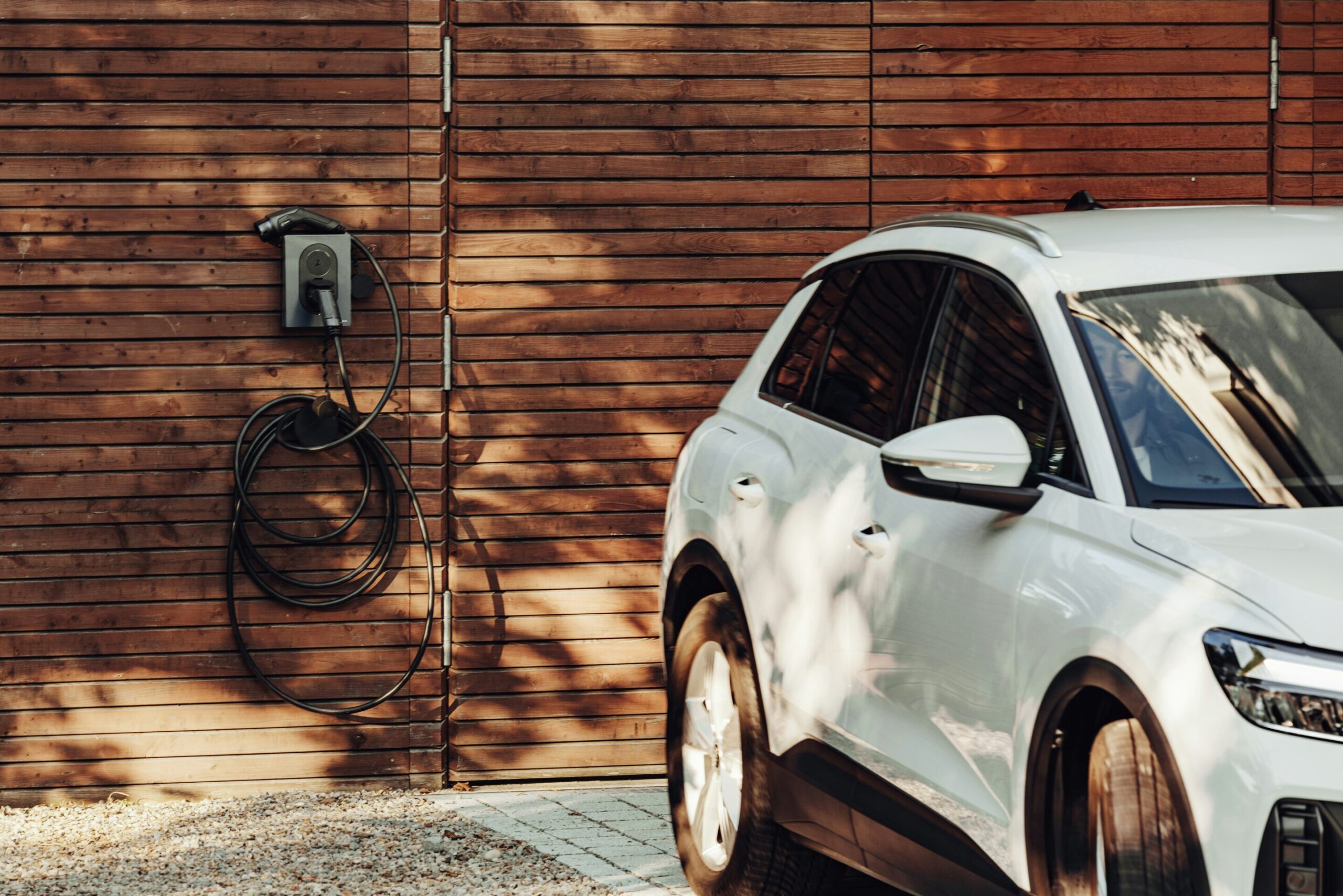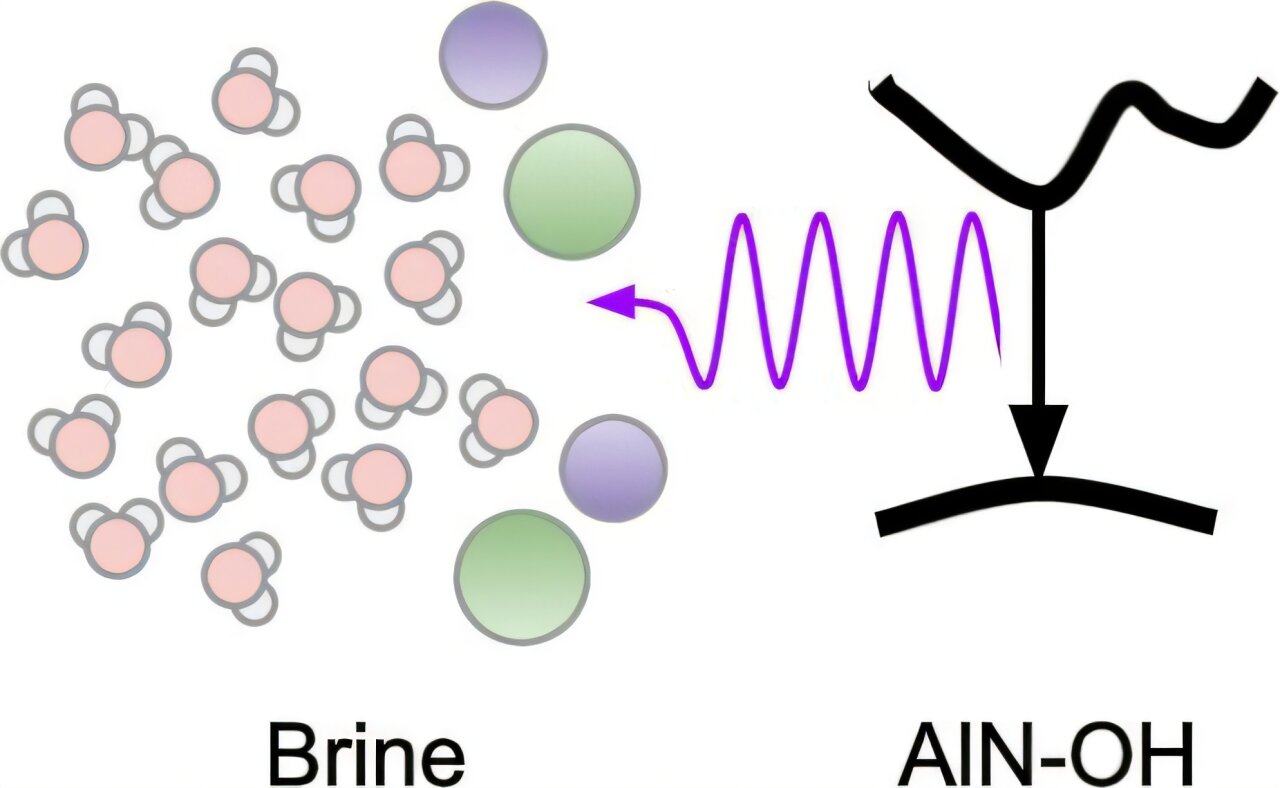Tech
Electric vehicles could strain Quebec’s power grid

Electrification of vehicles is necessary to reduce greenhouse gas emissions, but in Quebec the increasing weight of the battery-powered vehicles could cause electricity demand to rise well beyond projections.
That’s the conclusion of an analysis by Université de Montréal researchers Frédérik Lavictoire and Simon Brassard, supervised by Normand Mousseau, a professor in the Department of Physics.
Their results are published in the journal Sustainable Futures.
Cars are getting heavier
Between 2011 and 2021, the average weight of vehicles sold in Quebec increased by 11 kg per year for over 10 years, from 1,566 kg to nearly 1,700 kg.
New vehicles weigh an average of 135 kg more than the existing fleet average, while vehicles that are being retired are 104 kg lighter. A vehicle purchased today weighs an average of 110 kg more than the one it replaces.
With 60,000 vehicles being added to Quebec’s fleet each year, the cost of maintaining the road network—and the electrical grid—is likely to be steep, the UdeM researchers say.
Small SUVs, which accounted for 12.6% of the fleet in 2011, have surged in popularity to reach 28.3% in 2021. They have been the leading category since 2020.
Meanwhile, compact vehicles declined from 28.5% to 25.4% of vehicles on the road, and sedans and minivans fell from 19.7% to 14.6%.
With their heavy batteries, EVs in Quebec now weigh about 23% more than gas-powered vehicles, or an extra 344 kg.
Heavier vehicles also take a toll in terms of premature wear and tear on the roads and more serious injuries in accidents. And as they continue to get heavier, they also put a strain on Quebec’s power grid.
Between 2021 and 2040, the UdeM researchers project that the amount of electricity used by EVs in the province will increase from 0.24 terawatt hours (TWh) to 29.03 TWh.
Harsh winters increase demand
EVs accounted for about 13.6% of Quebec’s total electricity demand in 2019. By 2030, when the government aims to have two million EVs on the roads, EV consumption would reach 7.68 TWh.
That’s roughly consistent with Hydro-Québec’s projection of 7.8 TWh for 2032.
However, Mousseau is concerned about the grid’s capacity in the province’s harsh winter months, when cold spells can be protracted and extreme.
EVs use more power in winter than in summer because cold temperatures reduce battery efficiency, increase tire friction and increase air density.
In January, when the average temperature is -10.3°C, monthly EV consumption will rise to 3.1 TWh once Quebec’s vehicle fleet is fully electrified, compared with 1.9 TWh in August, the UdeM researchers project.
At -20°C, the required capacity is almost double that on a summer day.
“In winter, we need to control electricity usage because adding capacity to meet peak demand costs $150 to $200 per kilowatt,” Mousseau said.
“With a fully electrified fleet in 2040, EVs would require an average additional capacity of 5,261 megawatts when the temperature is -20°C. That’s 12.1% of the total peak demand recorded in 2022.
“If the increasing weight of the EV fleet adds another gigawatt to peak demand, it will cost hundreds of millions of dollars more to generate that electricity.”
Three possible scenarios
The researchers modeled three scenarios for the period 2021-2040.
In the first, they allow the trend toward heavier vehicles to continue without intervention. In this case, the average mass would increase to 2,114 kg by 2040. The fleet’s annual electricity consumption would increase to 29.03 TWh and the additional required capacity on a cold winter’s day would be 5,261 megawatts.
In the second scenario, the increase in weight is limited to the weight of the EV battery: on average in Quebec, about 344 kg.
In the third scenario, the average vehicle weight is frozen at the 2021 level of 1,566 kg. This would reduce EV electricity demand by 17.6% in 2040, from 29.03 to 23.91 TWh. The required capacity on a -20°C day would drop from 5,261 to 4,332 megawatts.
The saving of almost 6 TWh is equivalent to three percent of Hydro-Québec’s current total production. It would avoid the need to build costly infrastructure that would be needed only for a few hours a year, during winter peaks.
In scenario 1, by 2035, EVs will require additional capacity of 3,232 megawatts when the temperature is -20°C. That is 40.4% of all the additional power projected in Hydro-Québec’s action plan by 2035.
“Electrification of the vehicle fleet will entail system costs that will have to be borne,” said Mousseau. “We believe that reducing the average weight of vehicles is one solution that should be explored.”
Regulations could make batteries lighter
How can the weight of EVs be reduced? The researchers suggest several possibilities.
One is to reduce the weight of the battery, a significant technological challenge but one they believe is achievable with technological progress.
“Between 2017-2018 and 2021-2022, batteries were improved to increase range, but unfortunately, this improvement also increased the weight of the vehicles,” Mousseau said.
The simplest solution would be to amend the existing “Act to increase the number of zero-emission motor vehicles in Québec,” he suggested.
“Manufacturers could be required to comply with a specific average weight, or to offset the additional weight by paying a fine or tax.”
This approach, which has proven effective in stimulating the production of EVs, could also be used to control their weight, Mousseau said.
“For example, Tesla has benefited from the credit transfers allowed by the Act, demonstrating that it is possible to have manufacturers, not consumers, bear the cost of design choices.”
‘Strong global pressure’
Although the Quebec government recently backtracked on banning the sale of gasoline-powered vehicles by 2035, Mousseau is confident about the future of electrification.
“There is strong global pressure: the electrification of road vehicles will happen,” he said.
By postponing electrification, “Quebec is temporarily burying its head in the sand, but it cannot indefinitely block access to more efficient and less expensive electric vehicles, such as those made in China.”
Mousseau also pointed to an important economic issue: “For 20 years, we have watched other countries develop green technologies. What will we be producing 20 years from now, if we keep letting others take the lead? If we don’t put our foot on the accelerator, there’ll be significant economic risks.”
More information:
Frédérik Lavictoire et al, Impact of the car fleet evolution on electricity demand in Québec, Sustainable Futures (2025). DOI: 10.1016/j.sftr.2025.101296
Citation:
Electric vehicles could strain Quebec’s power grid (2025, November 3)
retrieved 3 November 2025
from https://techxplore.com/news/2025-11-electric-vehicles-strain-quebec-power.html
This document is subject to copyright. Apart from any fair dealing for the purpose of private study or research, no
part may be reproduced without the written permission. The content is provided for information purposes only.
Tech
Ceramic material pair could unlock potential of safer, longer-lasting solid-state batteries

A team of four universities and three national laboratories, led by The University of Texas at Austin, developed a new approach for solid-state batteries, improving their performance while reducing the manufacturing costs. Solid-state batteries are an emerging energy storage technology that could unlock enhanced performance for drones, electronics and electric vehicles.
“The biggest game in town for next-generation batteries is making them all solid-state, allowing for improved safety and higher energy,” said David Mitlin, professor in the Cockrell School of Engineering’s Walker Department of Mechanical Engineering and the lead investigator on the new research published in Nature Materials. “However, much more work is needed before all solid-state batteries may be widely commercialized.”
Today, most lithium-ion batteries use an organic liquid electrolyte, a maple-syrup-like substance that allows lithium ions to reversibly shuttle back and forth inside the battery. Despite being technologically mature, liquid electrolytes are the hydrocarbon “fuel” in the oft-reported battery fires.
Solid, ceramic-based electrolytes reduce fire risks, eliminating the hydrocarbon fuel that sustains battery thermal runaway reactions. However, ceramic electrolytes face their own hurdles, including high costs, challenging quality control during manufacturing and premature failure due to metal filament (termed dendrite)–induced short-circuiting.
Oxide ceramics based on the garnet structure are key materials for all solid-state batteries. Garnet’s unique structure allows lithium ions to move quickly and efficiently, making it ideal for energy storage. But even garnet has struggled to overcome the dendrite problem, which is directly linked to the formation of small cracks inside the electrolyte.
Like a jeweler refining a gemstone, the researchers have polished the garnet to reveal its full potential. Dispersing micro-scale zirconia particles throughout the garnet grains suppresses both the cracking and the dendrites.
This method is based on carbide additives, which exothermically decompose during fabrication, inputting additional heat into the synthesis reaction. This creates an additional benefit of reducing the manufacturing cost by lowering the external temperature needed for processing.
“Zirconia really pulls double duty here,” said Yixian Wang, postdoctoral researcher in Mitlin’s lab, who is the co-lead author. “It helps densify the material while also preventing those pesky lithium dendrites from forming. It’s a win–win for battery performance and safety.”
In tests, the zirconia-modified garnet achieved nearly double the critical current density—the maximum current it can handle before short-circuiting—compared to unmodified garnet. This means batteries using this material can operate at higher power levels without compromising safety.
While battery science is the driving force of this research, the results may be applied to a wide variety of manufacturing sectors for high-quality ceramics, where defect control is essential.
More information:
Vikalp Raj et al, Grain boundary zirconia-modified garnet solid-state electrolyte, Nature Materials (2025). DOI: 10.1038/s41563-025-02374-9
Citation:
Ceramic material pair could unlock potential of safer, longer-lasting solid-state batteries (2025, November 4)
retrieved 4 November 2025
from https://techxplore.com/news/2025-11-ceramic-material-pair-potential-safer.html
This document is subject to copyright. Apart from any fair dealing for the purpose of private study or research, no
part may be reproduced without the written permission. The content is provided for information purposes only.
Tech
UV light holds promise for energy-efficient desalination

A team of UC Riverside researchers has uncovered a potential breakthrough in solar desalination that could reduce the need for energy-intensive saltwater treatment.
Led by Luat Vuong, an associate professor of mechanical engineering in UCR’s Marlan and Rosemary Bourns College of Engineering, the team has demonstrated for the first time how the highest frequencies of sunlight—specifically invisible ultraviolet (UV) light—can break the stubborn bonds between salt and water.
“To our knowledge, nobody else has yet articulated this deep UV channel for salt-water separation,” Vuong said. “UV light in the wavelength range of 300–400 nanometers is used for disinfection, but this deep UV channel, around 200 nanometers, is not well known. We may be the first to really think about how you can leverage it for desalination.”
While much work remains before practical applications are developed, the discovery provides a clear path for further research and innovation.
Published in ACS Applied Materials & Interfaces, the study by Vuong and her colleagues details how the team made a wick from aluminum nitride—a hard, white ceramic—to separate salt from water by harnessing specific light wavelengths that interact with salt water without heating the bulk liquid.
Unlike traditional solar desalination methods, which rely on dark materials to absorb heat and boil water, Vuong’s approach could bypass the need for thermal processes altogether.
The experiments involved placing pairs of ceramic wicks in an enclosed chamber, with each allowed to equilibrate or adjust to similar environmental conditions. Under UV light, evaporation rates of salt water increased significantly compared to control samples kept in the dark or exposed to red, yellow, or infrared light.
“Aluminum nitride is well suited for emitting UV light due to its crystalline structure,” Vuong explained.
The material may be triggering a process called “photon upconversion,” in which low-energy photons combine into a single high-energy photon. That upconverted photon delivers a more powerful punch, potentially strong enough to break the salt-water bonds.
If this upconversion process occurs without generating excess heat, which is yet to be determined, the approach could offer a non-photothermal alternative to traditional solar desalination systems that boil or heat salt water to produce vapor, which then condenses into fresh water.
Such solar systems also could reduce the heavy electricity demands of reverse osmosis systems, which use high-pressure pumps to force salt water through membranes. The system could also address the concentrated reverse-osmosis brine waste, which is toxic to marine life when discharged into waterways.
Other potential applications for the wicking approach may be for other waste management processes, harvesting minerals in extreme environments, or replacing “swamp” coolers with salt water evaporation systems.
Still, Vuong emphasized that further research is needed before aluminum nitride-based solar desalination systems can be engineered for widespread use.
“Other materials may be designed to be just as effective, but aluminum nitride is practical. It is inexpensive, widely available, non-toxic, highly hydrophilic, and durable,” Vuong said.
Moving forward, Vuong’s group is designing system architectures, fabrication processes, and spectroscopic tools to better understand and enhance light-driven evaporation.
More information:
Navindra Singh et al, Spectrum Selective Interfaces and Materials toward Nonphotothermal Saltwater Evaporation: Demonstration with a White Ceramic Wick, ACS Applied Materials & Interfaces (2025). DOI: 10.1021/acsami.5c12331
Citation:
UV light holds promise for energy-efficient desalination (2025, November 4)
retrieved 4 November 2025
from https://techxplore.com/news/2025-11-uv-energy-efficient-desalination.html
This document is subject to copyright. Apart from any fair dealing for the purpose of private study or research, no
part may be reproduced without the written permission. The content is provided for information purposes only.
Tech
Digital divide narrows but gaps remain for Australians as GenAI use surges

The Australian Digital Inclusion Index has found almost half of Australians recently used generative AI tools, raising new opportunities and challenges for digital inclusion.
Usage was highest among students, with 79% reporting recent use, while 69% of Aussies aged 18 to 34 have also engaged with GenAI.
Overall, 46% of Australians reported recently using GenAI.
People living in remote areas were twice as likely to use AI chatbots for social connections or conversations than those in metropolitan areas.
Australians who speak a language other than English at home were more likely to use GenAI, 59% compared to 41% of English-only speakers, likely due to advances in AI-powered translation.
About a third of people with disabilities have used GenAI, with strong use of these technologies among this group for entertainment and advice.
The study’s Chief Investigator, Distinguished Professor Julian Thomas from RMIT University, said GenAI was creating new digital divides but also presenting fresh opportunities.
“GenAI has the potential to deliver significant benefits for everyone, but its impact will be greatest if it’s implemented fairly and no one is left behind in the digital transformation,” he said.
“People with lower digital skills may be less likely to benefit from AI, while being more exposed to new risks such as scams, misleading content and invasive data practices.
“As technologies like GenAI and new security tools evolve quickly, people need to keep refreshing their digital skills to stay current.”
The most common uses for GenAI were generating text, creating images and creating programming code.
Access and skills improving but persistent barriers remain
The Australian Digital Inclusion Index measures how Australians access and use digital technologies, factoring in digital skills and affordability.
It’s a collaboration between the ARC Center of Excellence for Automated Decision-Making and Society, RMIT University, Swinburne University of Technology and Telstra.
Australians’ overall skills and confidence to use digital technologies strengthened, rising 8.7 points between 2023 and 2025 to 73.6.
The largest gains were among people aged 75 and over, whose digital ability increased from 23.3 to 41.5, and among those without secondary education, rising from 38.5 to 54.4.
While the findings suggest digital inclusion is improving, about one in five Australians still struggle to fully access, afford and use technology.
Chief Investigator Professor Anthony McCosker from Swinburne said the report showed major gaps between Australians who can fully participate in the digital economy and those being left behind.
“Digital exclusion remains a big challenge, particularly for older Australians, those in remote communities and people experiencing social and economic disadvantage,” he said.
It’s more than just an inconvenience; digital exclusion cuts people off from vital services and opportunities in education, work and health.
Regional Australia still lags cities in digital inclusion
The most digitally excluded were older people, those facing social or economic disadvantage and First Nations Australians.
Gaps between those in capital cities and the rest of Australia remain significant, with digital inclusion scores trending downward with remoteness.
Access, affordability and digital ability scores were below the national average in Tasmania, South Australia and Queensland, while Northern Territory residents faced significant access challenges.
Telstra Chief Sustainability Officer Justine Rowe said the company would use the evidence in the Index to target support where it can have the greatest impact.
“Closing Australia’s digital divide is a focus for Telstra’s Connected Future 30 strategy and we commit to supporting the digital inclusion of 1 million people by FY2030, with at least 200,000 in the Northern Territory, South Australia or Tasmania where there continue to be significant digital inclusion challenges,” she said.
Across Australia, inner-metropolitan areas had the highest levels of digital inclusion, while remote and very remote local government areas had the lowest scores.
The study found many low-income households were unable to afford a home internet connection, leaving them reliant on pre-paid mobile as their main, and often only, way to get online.
Public housing residents, people without secondary education and people with disability faced the greatest challenges in paying for digital services.
There was a significant affordability gap of 13 points between First Nations people and other Australians.
More data specific to mapping the digital gap for First Nations Australians is expected to be released by the ARC Center of Excellence for Automated Decision-Making and Society in December.
More information:
Measuring Australia’s Digital Divide: 2025 Australian Digital Inclusion Index, DOI: 10.60836/mtsq-at22
Citation:
Digital divide narrows but gaps remain for Australians as GenAI use surges (2025, November 4)
retrieved 4 November 2025
from https://techxplore.com/news/2025-11-digital-narrows-gaps-australians-genai.html
This document is subject to copyright. Apart from any fair dealing for the purpose of private study or research, no
part may be reproduced without the written permission. The content is provided for information purposes only.
-

 Tech7 days ago
Tech7 days agoOpenAI says a million ChatGPT users talk about suicide
-

 Tech7 days ago
Tech7 days agoHow digital technologies can support a circular economy
-

 Tech7 days ago
Tech7 days agoUS Ralph Lauren partners with Microsoft for AI shopping experience
-

 Tech7 days ago
Tech7 days agoAI chatbots are becoming everyday tools for mundane tasks, use data shows
-

 Fashion1 week ago
Fashion1 week agoTaiwan Textile Select showcases sustainable innovation at TITAS 2025
-

 Tech1 week ago
Tech1 week agoHere’s How Many People May Use ChatGPT During a Mental Health Crisis Each Week
-

 Fashion1 week ago
Fashion1 week agoITMF elects new board at 2025 Yogyakarta conference
-

 Fashion1 week ago
Fashion1 week agoJapan’s textile trade shows strong apparel demand, weak yarn imports

















